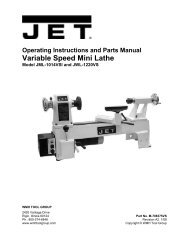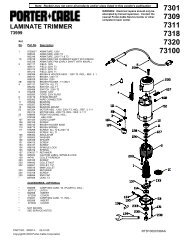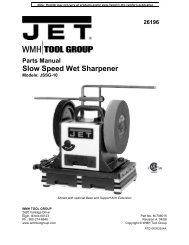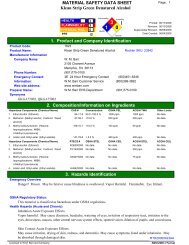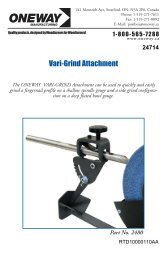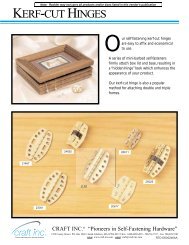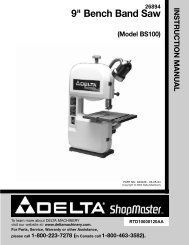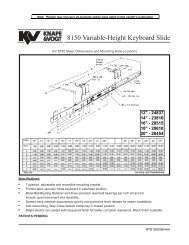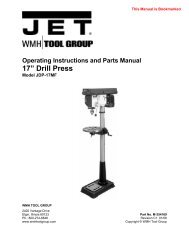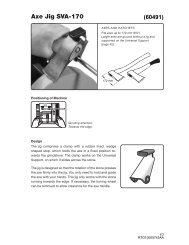dovetail jig supplementary instruction manual (39887) - Rockler.com
dovetail jig supplementary instruction manual (39887) - Rockler.com
dovetail jig supplementary instruction manual (39887) - Rockler.com
Create successful ePaper yourself
Turn your PDF publications into a flip-book with our unique Google optimized e-Paper software.
CUTTING THE PINS<br />
Step 1 -<br />
Step 2 -<br />
Step 3 -<br />
Step 4 -<br />
Step 5 -<br />
Cut the pin board according to Fig. 60A.<br />
Hold the boards together and mark the pin board at the edges of the tails (Fig. 60B).<br />
Rotate the template so that the tapered fingers for cutting the pins is facing you.<br />
Mount the pin board with the outside surface facing away from the base of the <strong>jig</strong>. Center the<br />
marks from STEP 2 between the tapered fingers (A) Fig. 60C.<br />
Cut the pins in the same manner as you would with standard <strong>dovetail</strong>s.<br />
EXTRA WIDTH FOR BEVEL<br />
TAIL BOARD<br />
PIN BOARD<br />
Fig. 60B<br />
EDGE OF TAIL BOARD<br />
PIN BOARD WIDTH IS EQUAL TO<br />
EDGE OF TAIL BOARD PLUS<br />
EXTRA WIDTH FOR BEVEL<br />
Fig. 60A<br />
FITTING THE JOINT<br />
A<br />
Fig. 60C<br />
Fitting the joint is the same as fitting the standard<br />
<strong>dovetail</strong>. HINT: Use pieces of scrap wood the same<br />
thickness and species of wood to make test pin boards<br />
until the template is adjusted for a perfect fit.<br />
Fig. 61A<br />
COMPOUND-ANGLE JOINTS<br />
Two boards joined at 90°, with both boards slanted to the side is known as a <strong>com</strong>pound-angle joint. This method is<br />
used to make serving trays or planters.<br />
Fig. 62C<br />
Side<br />
Angle<br />
Side<br />
Angle<br />
Fig. 62A<br />
Fig. 62B<br />
34



